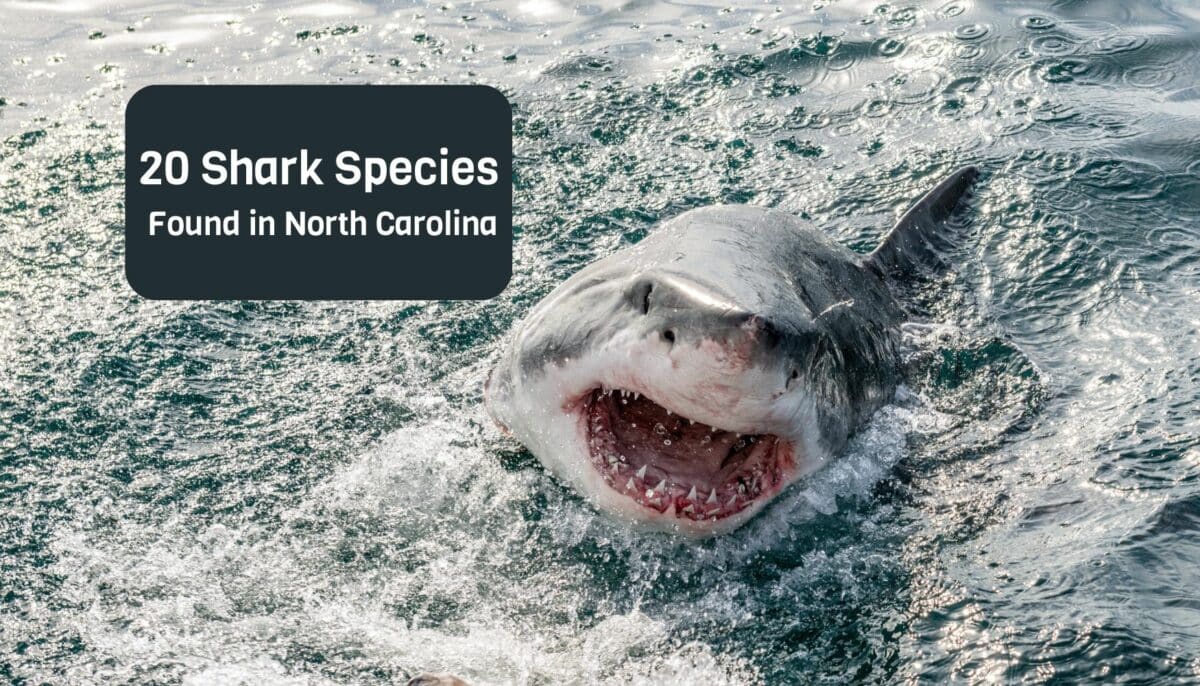Ever wondered what shark species are swimming around in the waters of North Carolina? Well, I have! Although many more shark species reside or cross through the North Carolina ocean, here is a list of 20 shark species you can find in North Carolina.
1. Great White Shark
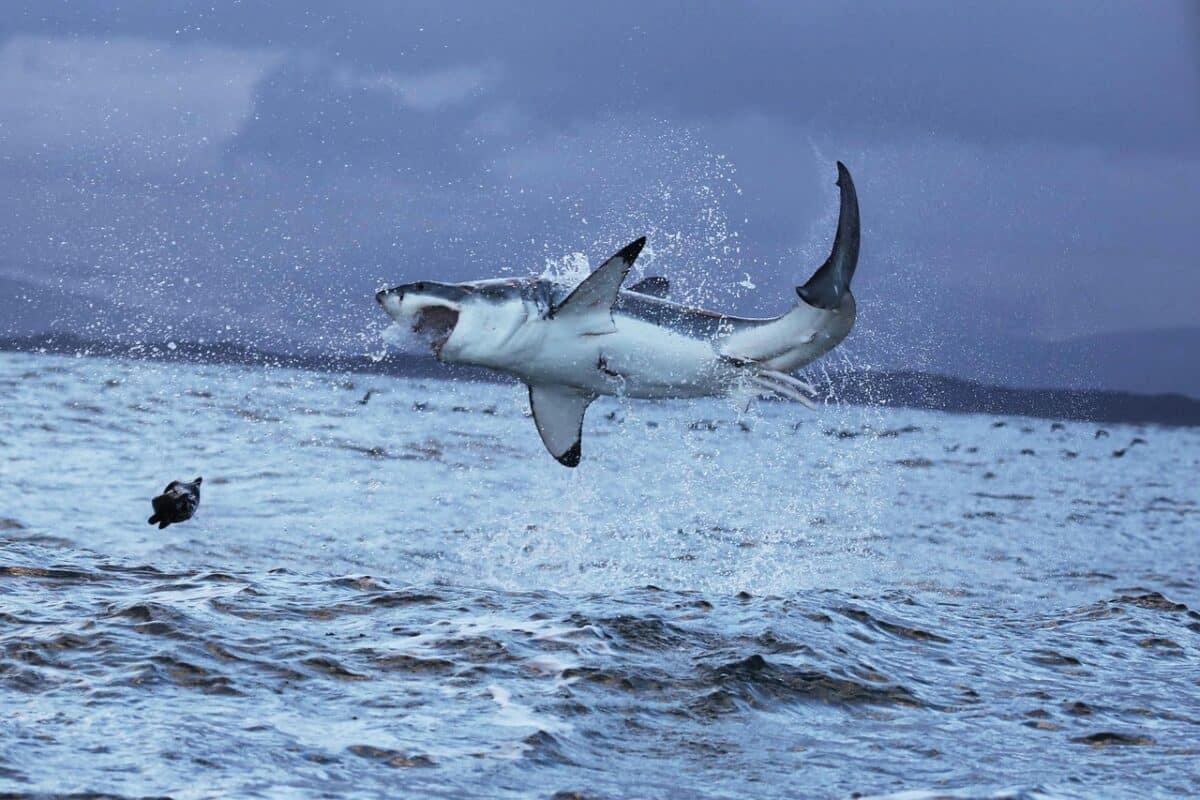
Great White sharks, Carcharodon carcharias, notorious for their ferocity and size, grow to 21 feet and easily weigh over 2 tons! Even though these sharks are portrayed as man-eaters in the media, humans are not their first prey choice. They are listed as Vulnerable on the IUCN Red List.
2. Tiger Shark
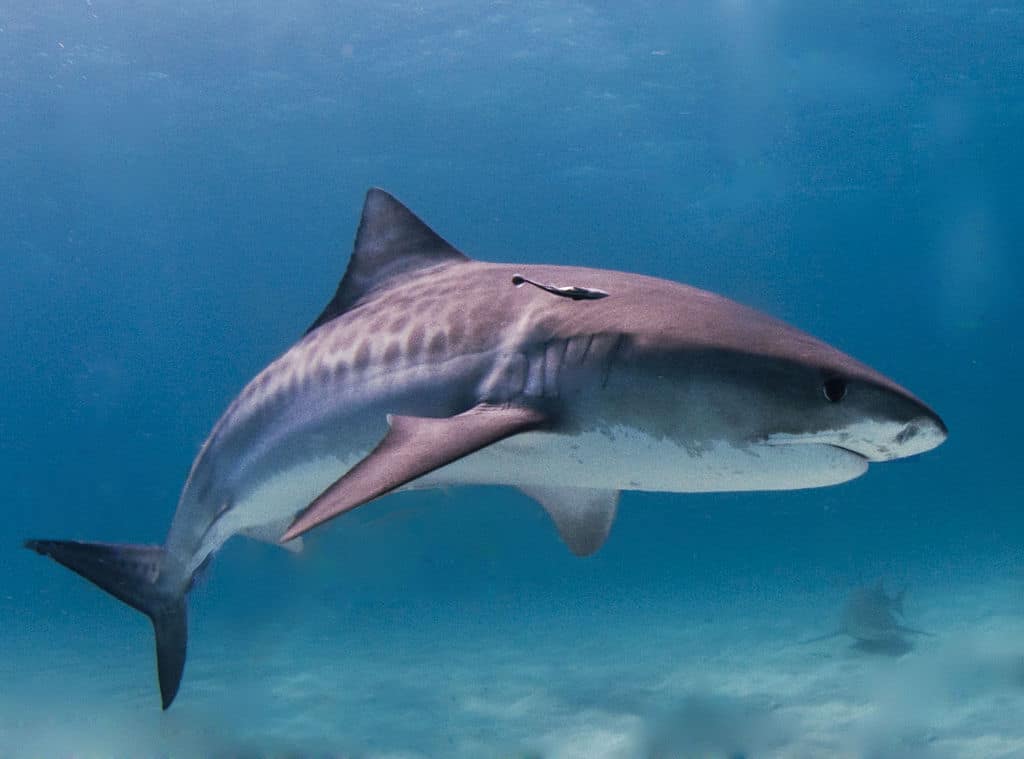
Tiger sharks, Galeocerdo cuvier, will eat almost anything – even the trash found in the ocean! They are known for their tiger-like stripe pattern which fades as these sharks age. Tiger sharks are listed as Near Threatened due to the over-finning of these sharks.
3. Thresher Shark
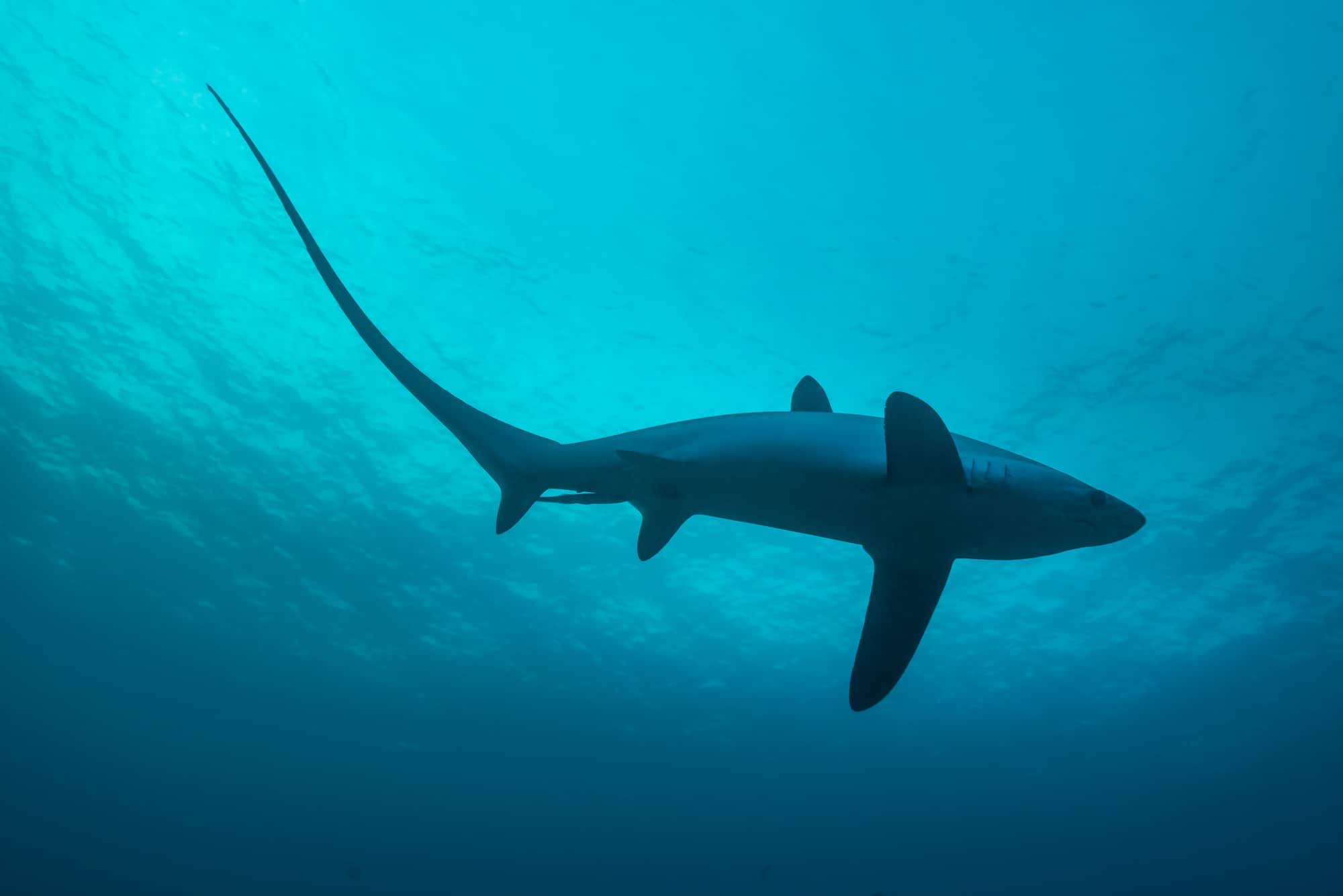
Thresher sharks, Alopias vulpinus, are known for their exceptionally long tails which can be longer than their actual body length. These solitary creatures are one of the few shark species that fully jump out of the water. All three species are listed as Vulnerable by the IUCN Red List.
4. Scalloped Hammerhead Shark
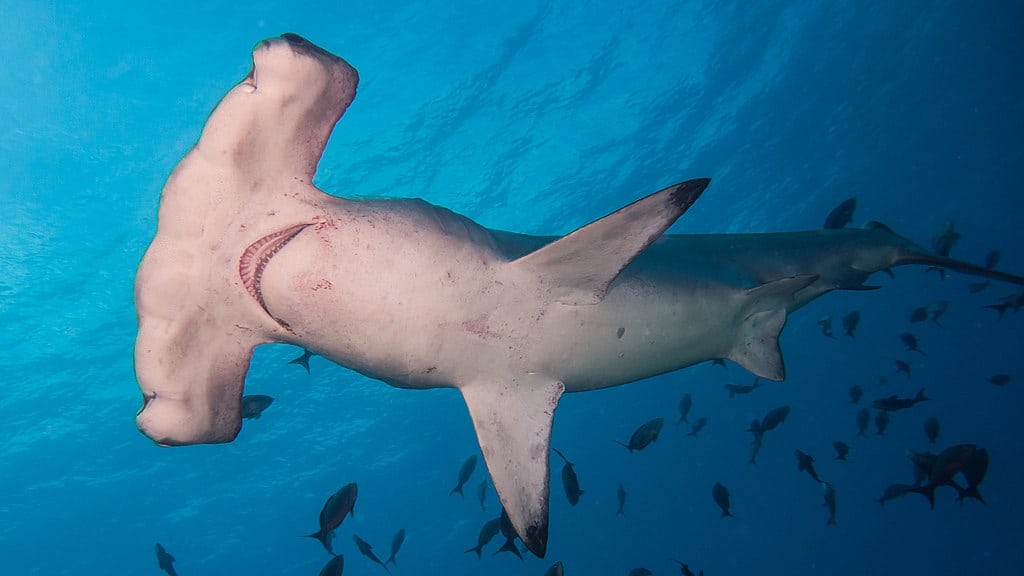
Scalloped Hammerhead sharks, Sphyrna lewini, are differentiated from other large hammerhead species by the scallop-like notch pattern on their heads. Females measure 8.2 feet and males typically 5.9 feet. These sharks are listed as Critically Endangered by the IUCN Red List.
5. Dusky Shark
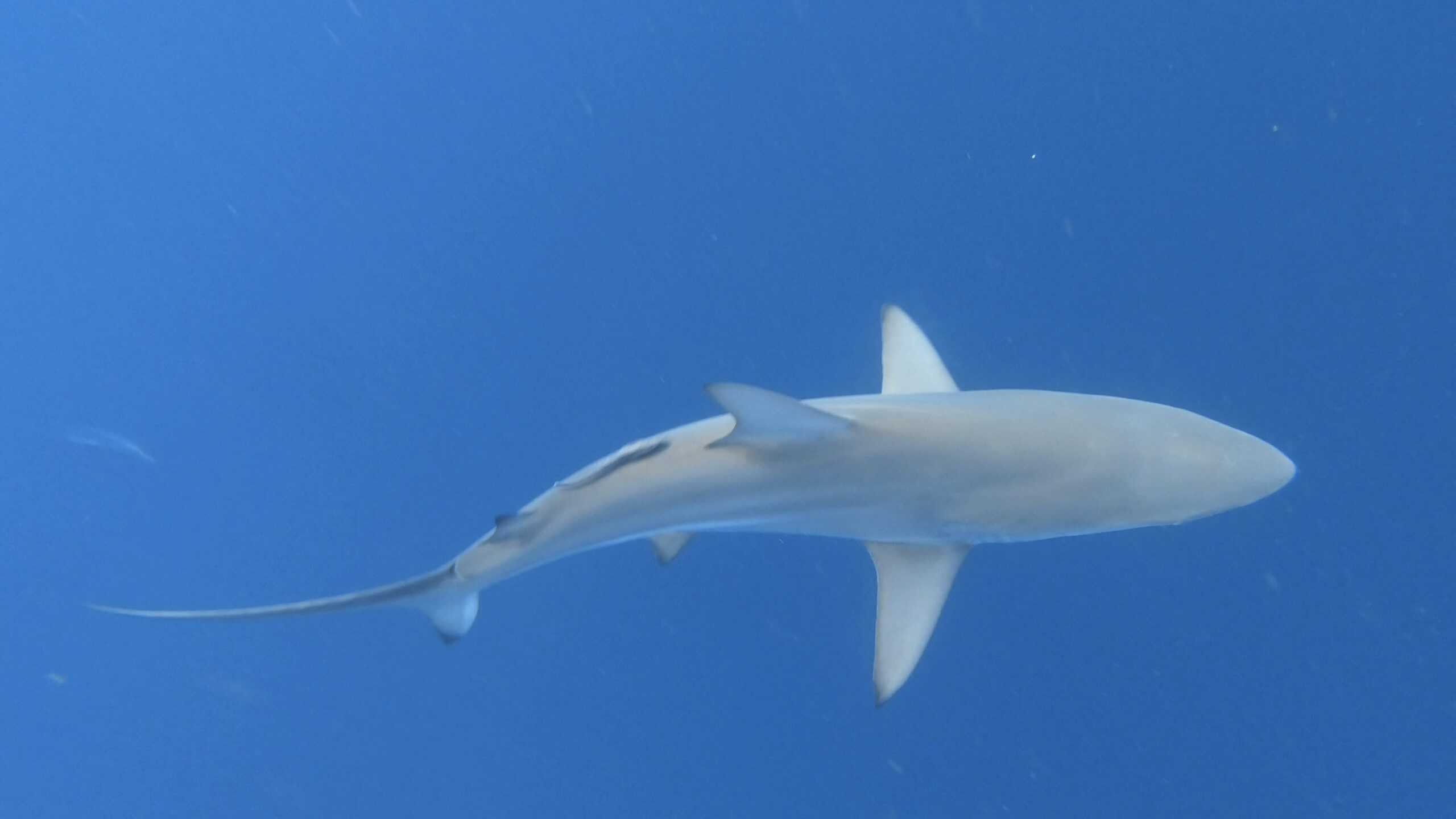
Dusky sharks, Carcharhinus obscurus, are large sharks born at 4 feet in size and growing to around 13 feet in length. These are some of the slowest maturing and growing sharks, only reaching adulthood at 20 years old. Making their Endangered status all the more problematic.
6. Bull Shark
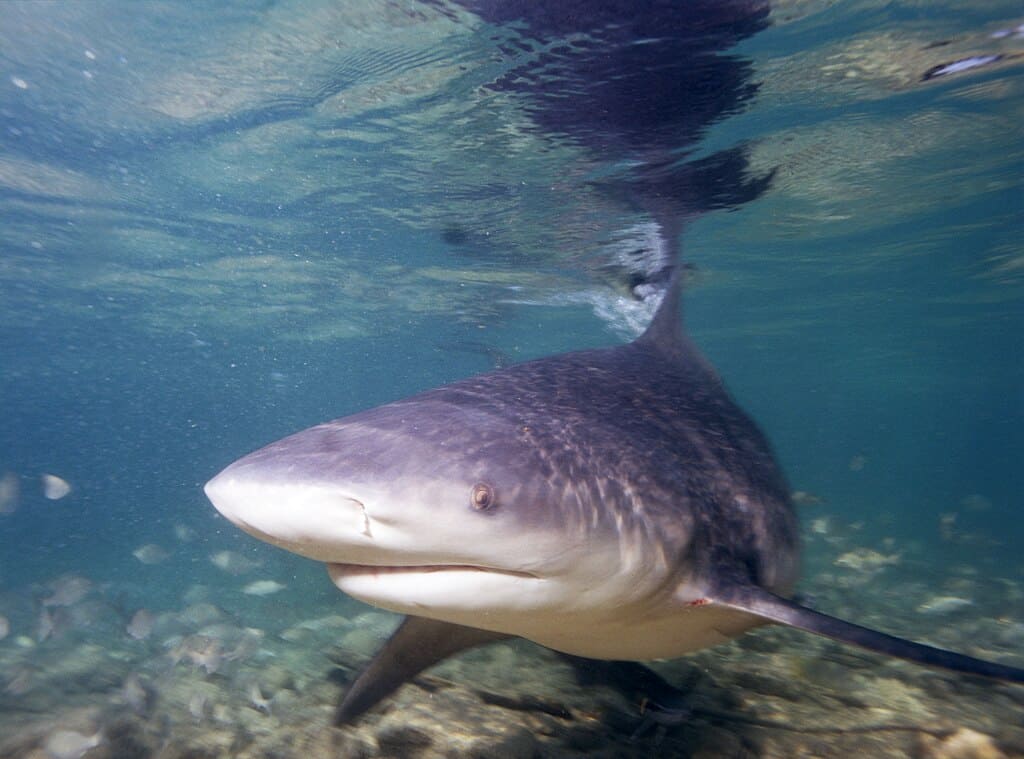
Bull sharks, Carcharhinus leucas, grow as big as 10.5 feet and are often found in waters that connect to the ocean, as these sharks can live in both fresh and saltwater. They are quite aggressive sharks, which led to the culling of these sharks to protect beachgoers. However, this has also caused their Vulnerable status on the IUCN Red List.
7. Sand Tiger Shark
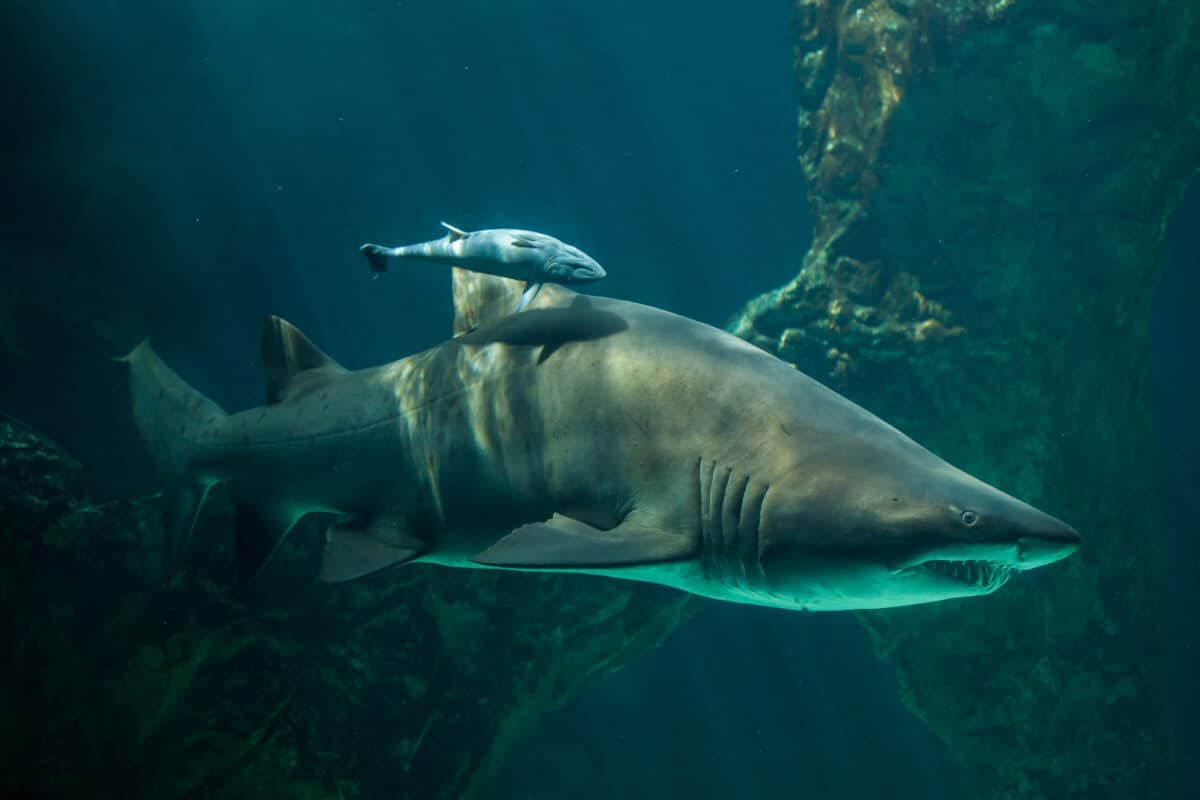
Sand Tiger sharks, Carcharias taurus, are most commonly seen around shipwrecks in the area. Although they grow to 12 feet, these sharks aren’t aggressive toward humans and are normally quite docile. They are listed as Vulnerable on the IUCN Red List.
8. Spinner Shark
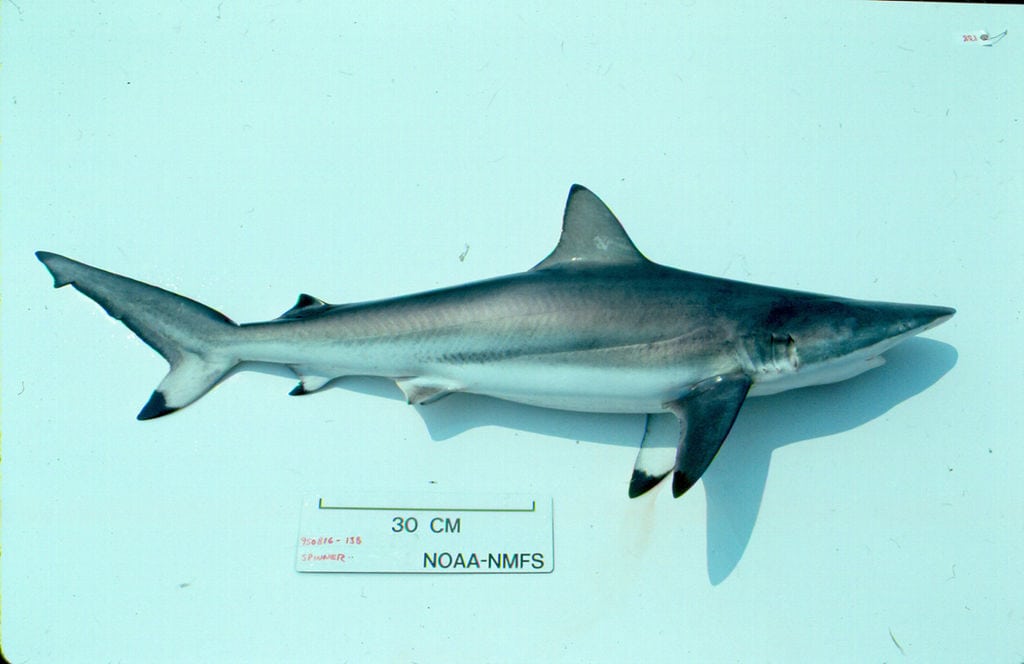
Spinner sharks, Carcharhinus brevipinna, love showing off their acrobatic abilities by emerging from the water in spectacular spinning leaps. These slender sharks feed by speeding through large schools of fish while spinning, finally ending in the leaps they are known for. They are listed as Near Threatened by the IUCN Red List.
9. Blacktip Shark
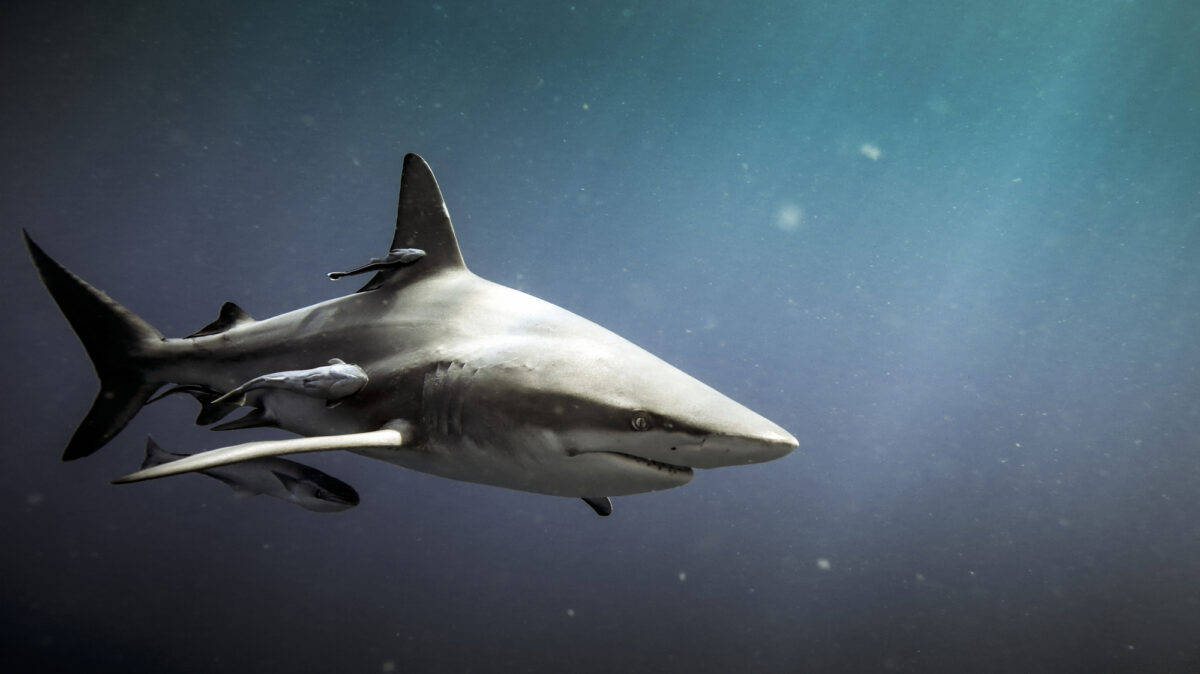
Blacktip sharks, Carcharhinus limbatus, are one of the larger sharks in the region measuring at around 8 feet in length. These are social sharks who return to where they were born to give birth themselves. They are listed as Vulnerable due to overfishing.
10. Sandbar Shark
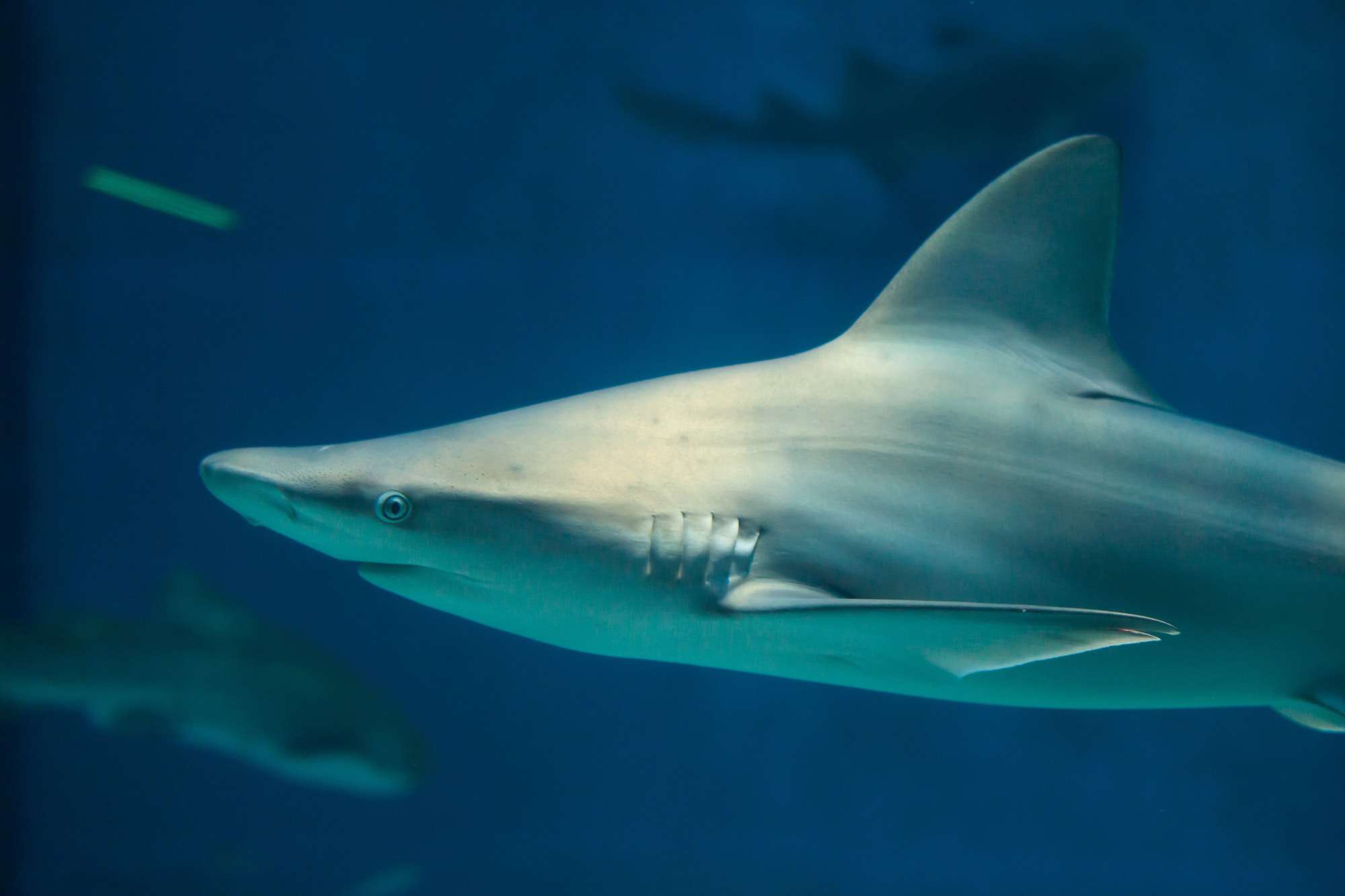
Sandbar sharks, Carcharhinus plumbeus, commonly grow to over 8 feet and are quite common in the waters of North Carolina. These fairly large sharks are listed as Endangered due to overfishing.
11. Blacknose Shark
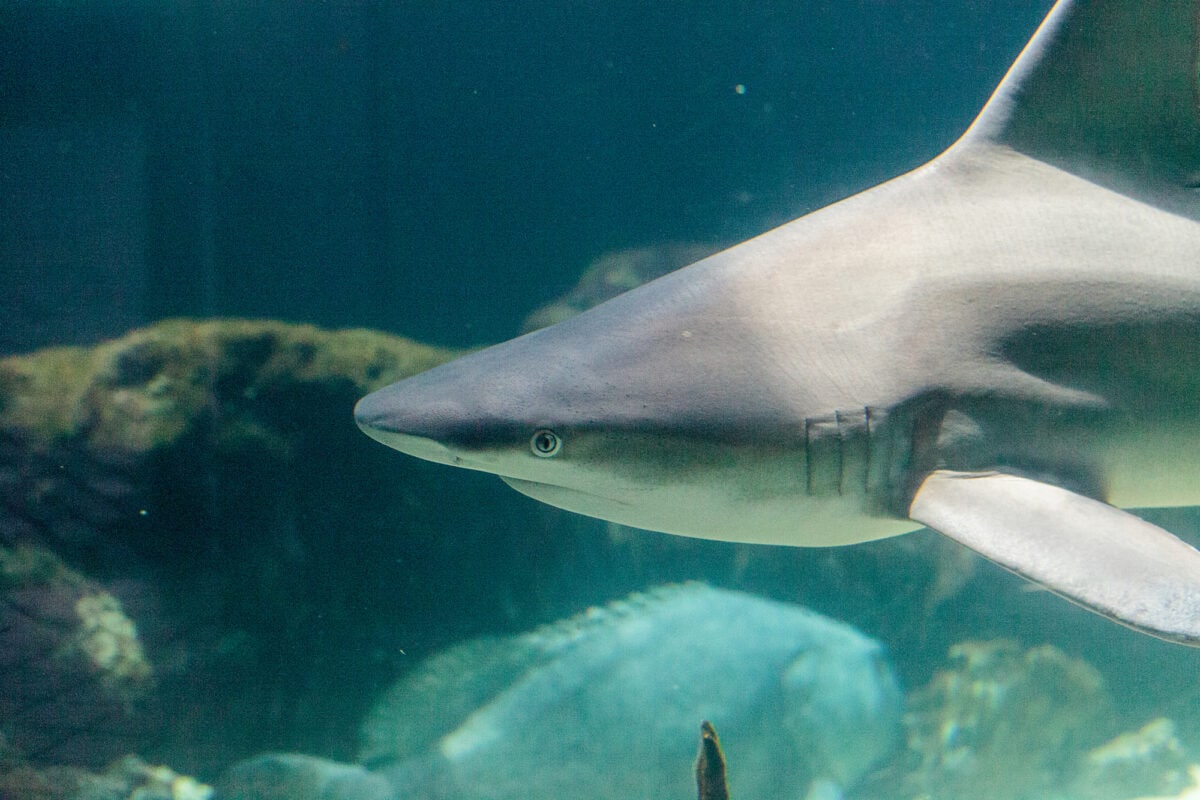
Blacknose sharks, Carcharhinus acronotus, received their name from the distinctive black spots at the tip of their noses. Measuring at an average length of 4.3 feet, these sharks are listed as Endangered as they are overfished worldwide.
12. Atlantic Sharpnose Shark
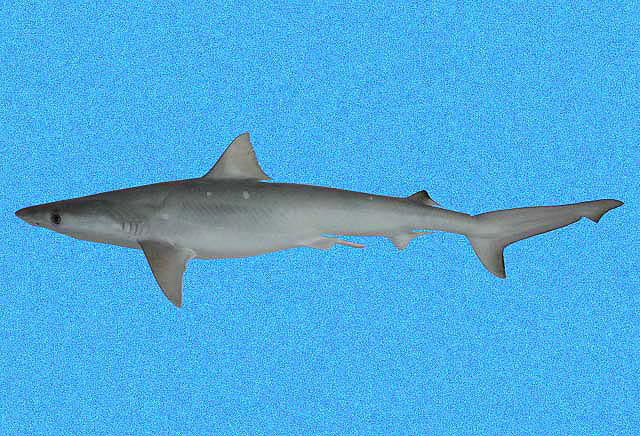
Atlantic Sharpnose sharks, Rhizoprionodon terraenovae, are one of the most common species found in North Carolina. These sharks are quite small measuring at an average length of 3.4 feet, and they are listed as a species of Least Concern on the IUCN Red List.
13. Lemon Shark
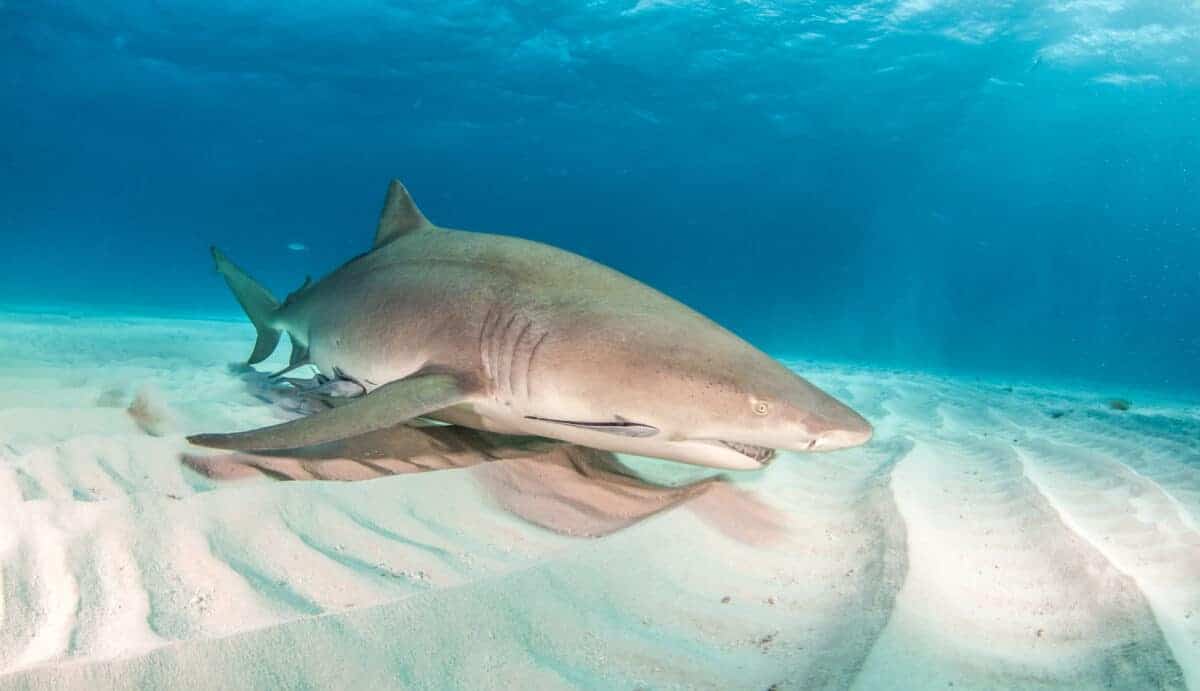
Lemon sharks, Negaprion brevirostris, distinguished by their brown and yellow coloring often grow to around 11 feet. These social sharks give birth to live young and are listed as Vulnerable on the IUCN Red List.
14. Bonnethead Shark
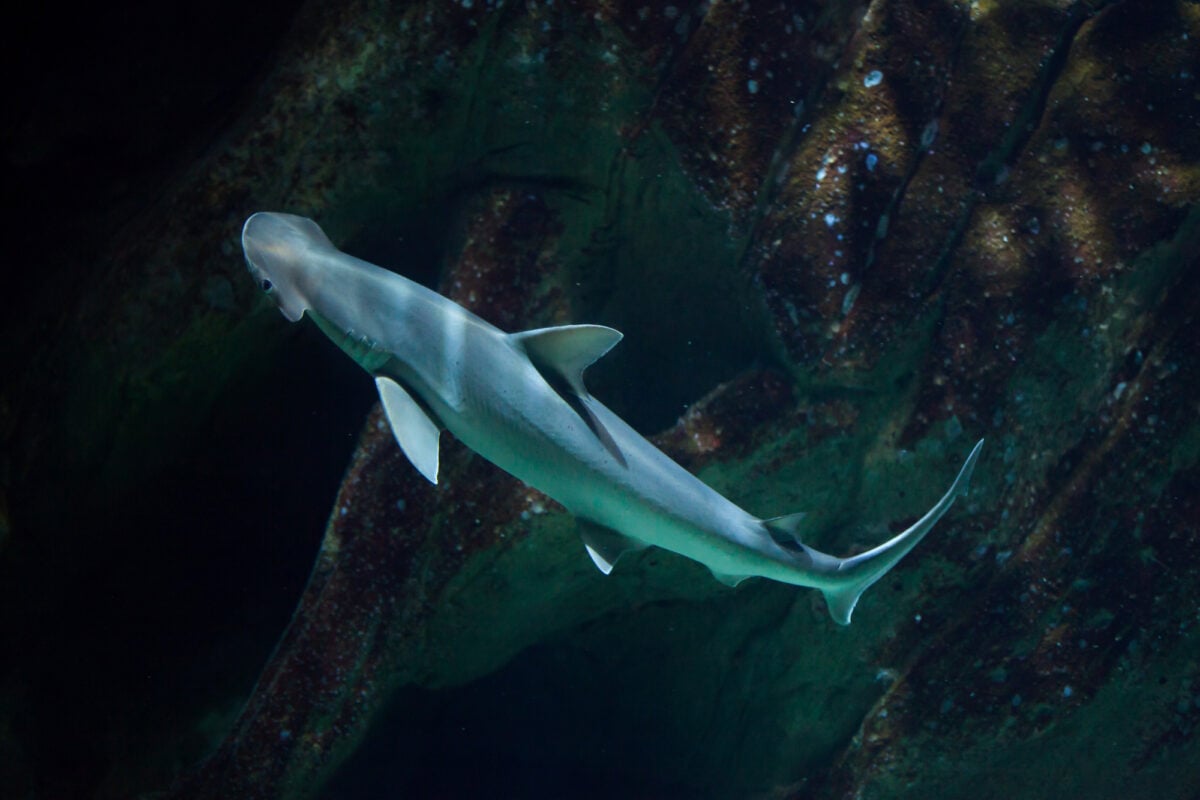
Bonnethead sharks, Sphyrna tiburo, have smaller, smoother, and more rounded heads than other hammerhead sharks. The diet of these omnivorous sharks includes large amounts of seagrass amongst other prey. They are listed as Endangered on the IUCN Red List.
15. Smooth Dogfish Shark
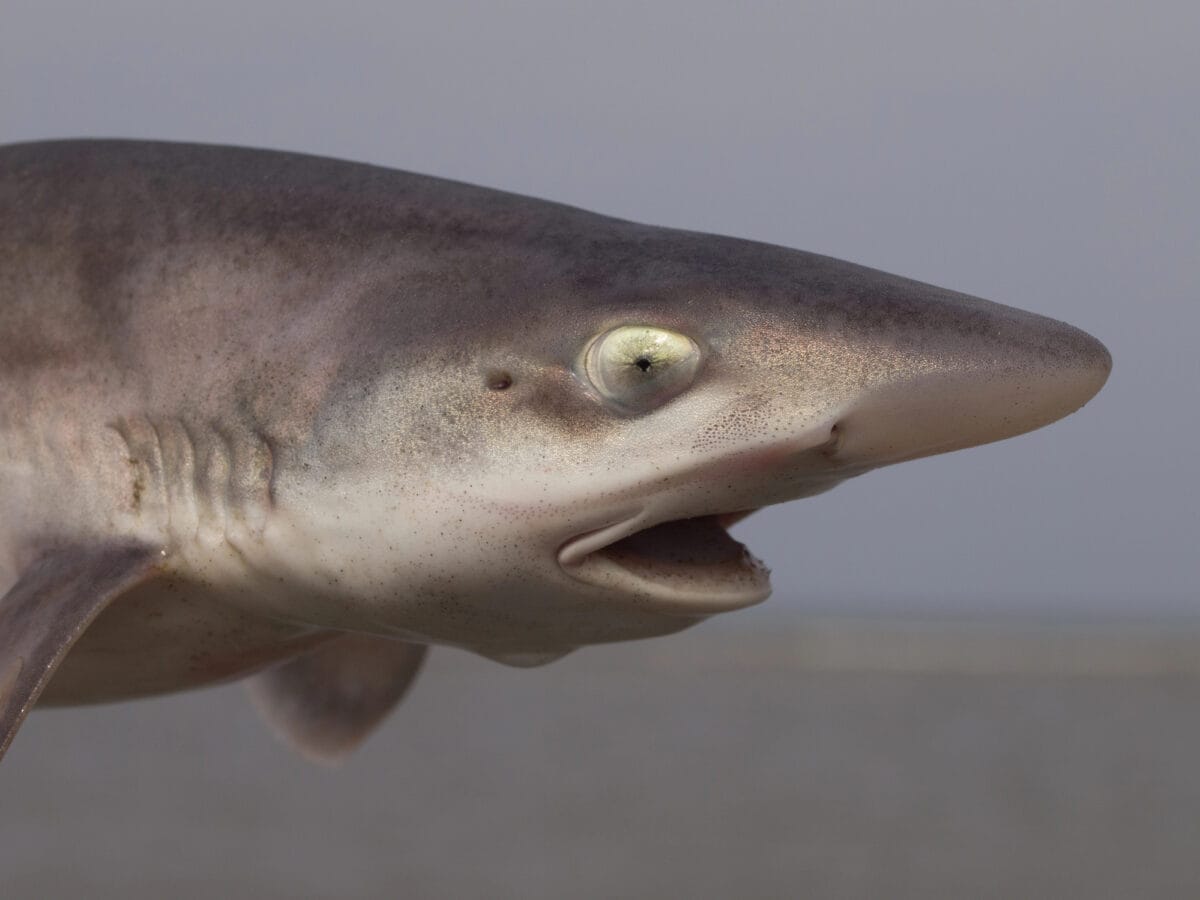
Smooth Dogfish sharks, Mustelus canis, also called Smoothhound sharks can grow to be bigger than 5 feet. These olive-grey-brownish sharks are listed as Near Threatened due to often being caught along with other fish by commercial fishing nets.
16. Finetooth Shark
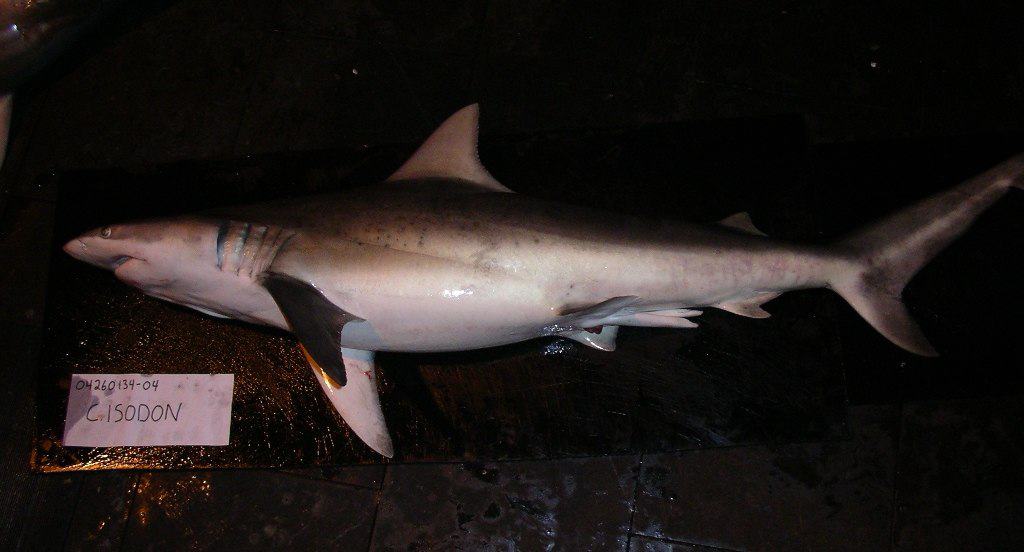
Finetooth sharks, Carcharhinus isodon, have slender bodies and live in large schools. Characterized by their needle-like sharp teeth, these sharks don’t often grow larger than 6.2 feet. They are listed as Near Threatened on the IUCN Red List.
17. Great Hammerhead Shark
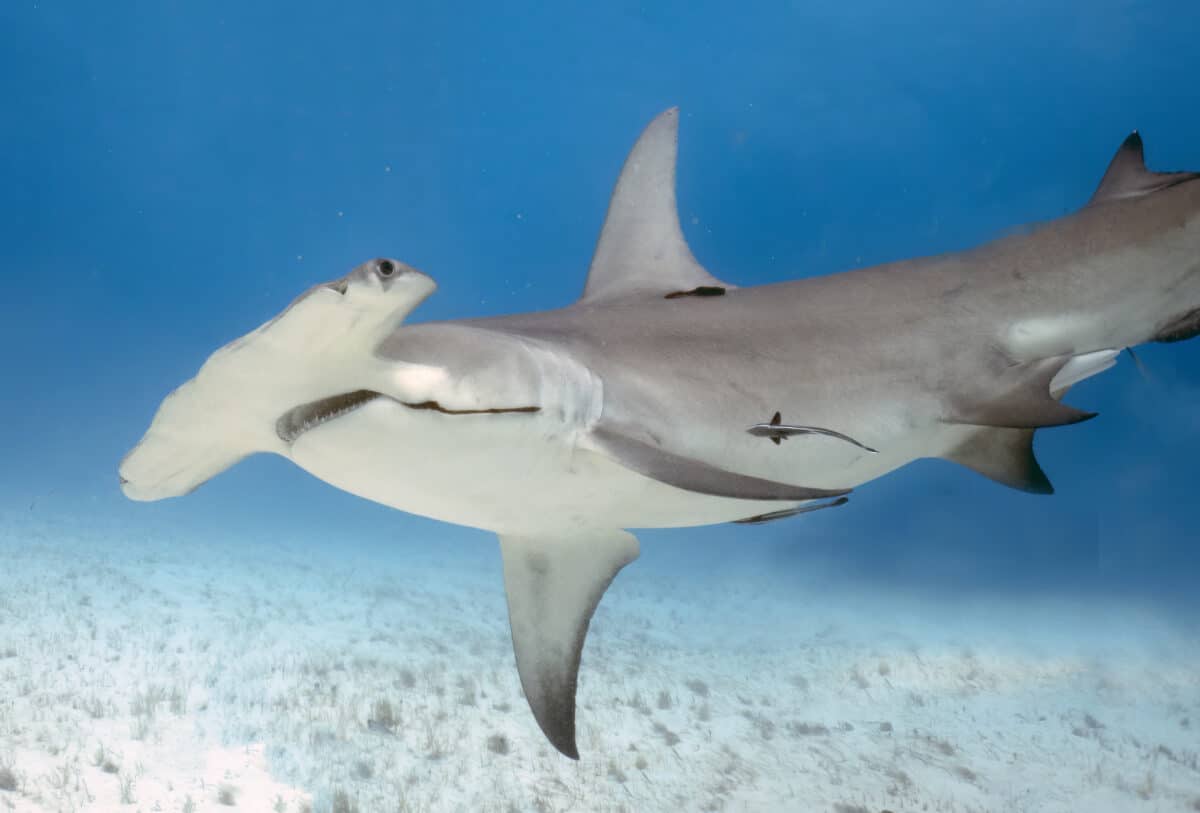
Great Hammerhead sharks, Sphyrna mokarran, are the largest of the hammerhead species with the biggest ever recorded shark measuring at 20 feet! These solitary apex predators are listed as Critically Endangered by the IUCN Red List.
18. Smooth Hammerhead Shark
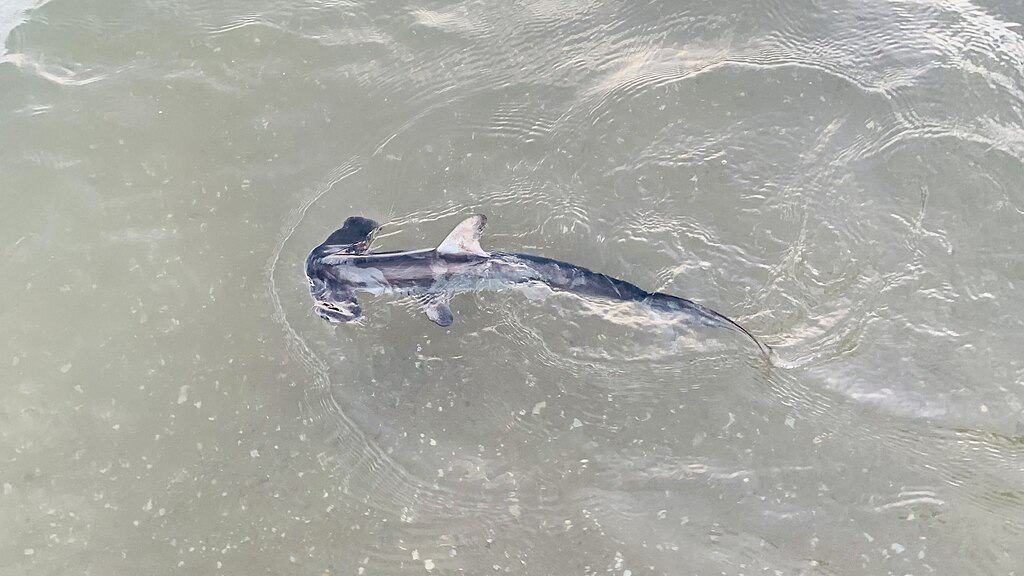
Smooth Hammerhead sharks, Sphyrna zygaena, differ from other hammerheads by the smooth shape of their head. These migratory sharks form large schools while migrating to colder waters. They are listed as Vulnerable on the IUCN Red List.
19. Shortfin Mako Shark
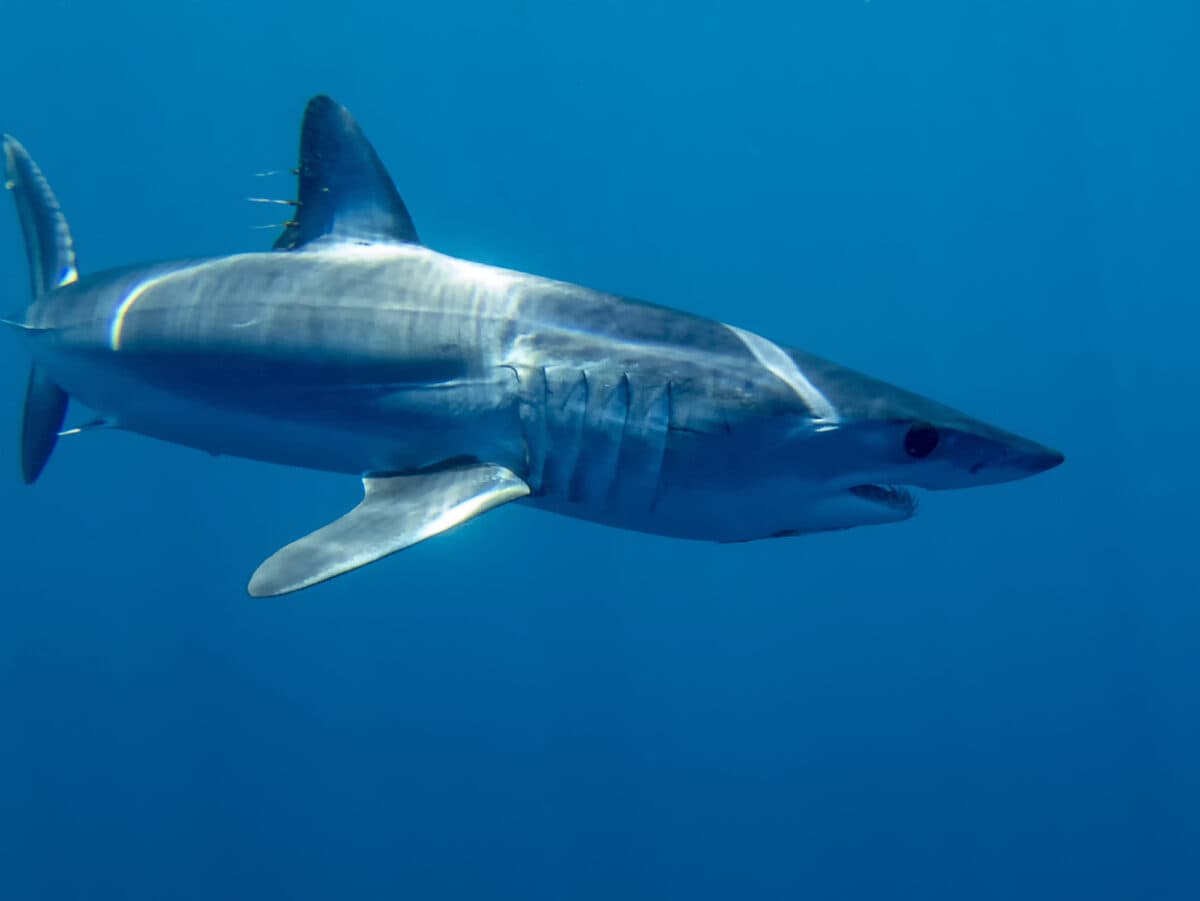
Shortfin Mako sharks, Isurus oxyrinchus, also known as the bonito shark, weigh almost 1,300 pounds and measure 13 feet! These sharks travel a lot, averaging 36 miles a day. They are listed as Endangered due to overfishing by commercial fisheries.
20. Nurse Shark
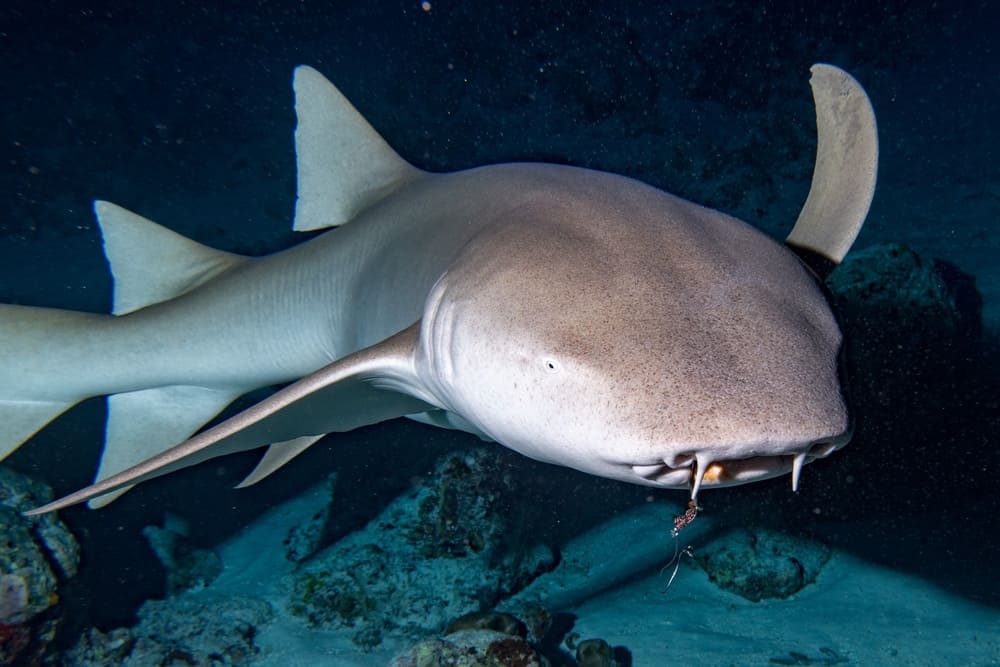
Nurse sharks, Ginglymostoma cirratum, are mostly considered bottom-dwelling sharks where they live around rocky areas and reefs. These sharks play a vital role in shark research, as they are robust and can easily be tagged and tracked. They are listed as Vulnerable due to being targeted by fisheries.
Final Say on the Sharks in North Carolina
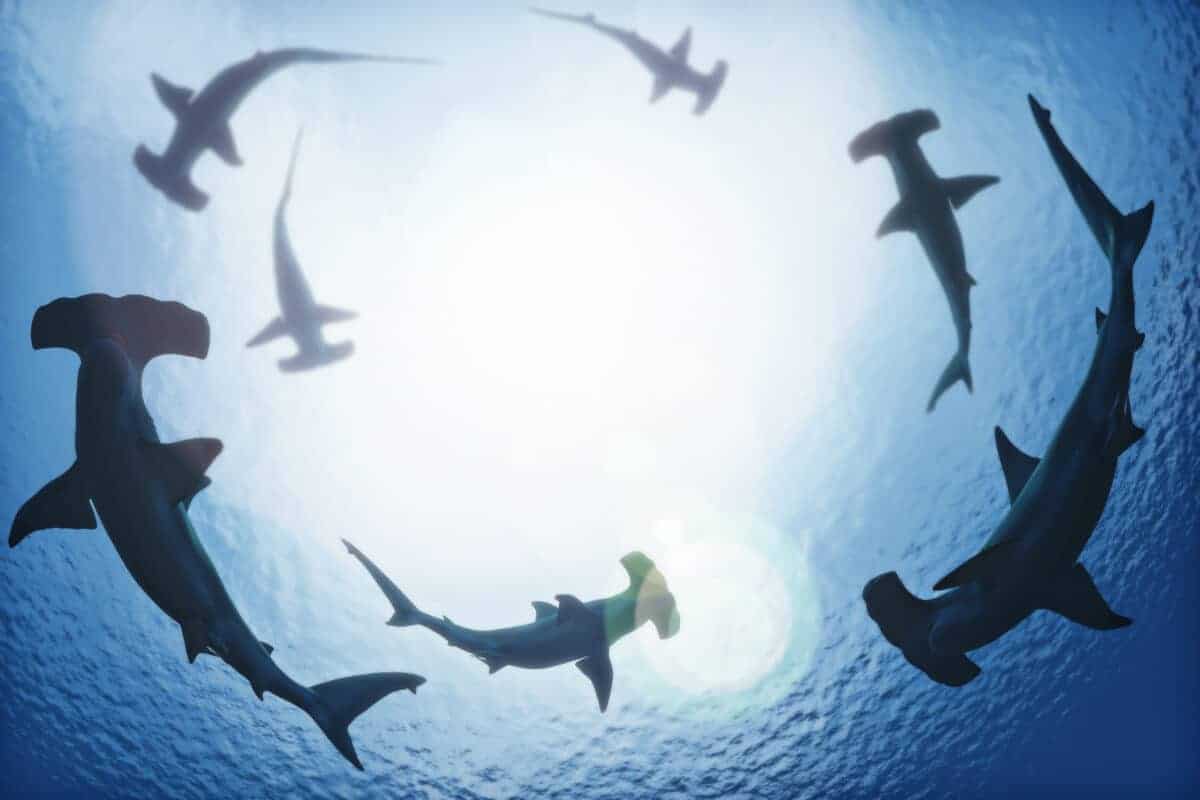
In this list, we saw some big sharks, some smaller ones, and some with interesting habits! Unfortunately, most of them are considered endangered to some extent. It is always important to remember that sharks play a vital role in the ocean ecosystem and that we must do what we can to protect these species from going extinct!
If you enjoyed learning more about the sharks in North Carolina, you might enjoy these too:
- Watch As Dogs Conduct An Orchestra – With Their Tails - April 24, 2024
- Rescue Puppy Becomes A Style Icon - April 23, 2024
- Proof That The Cat Distribution Theory Is Real - April 22, 2024

